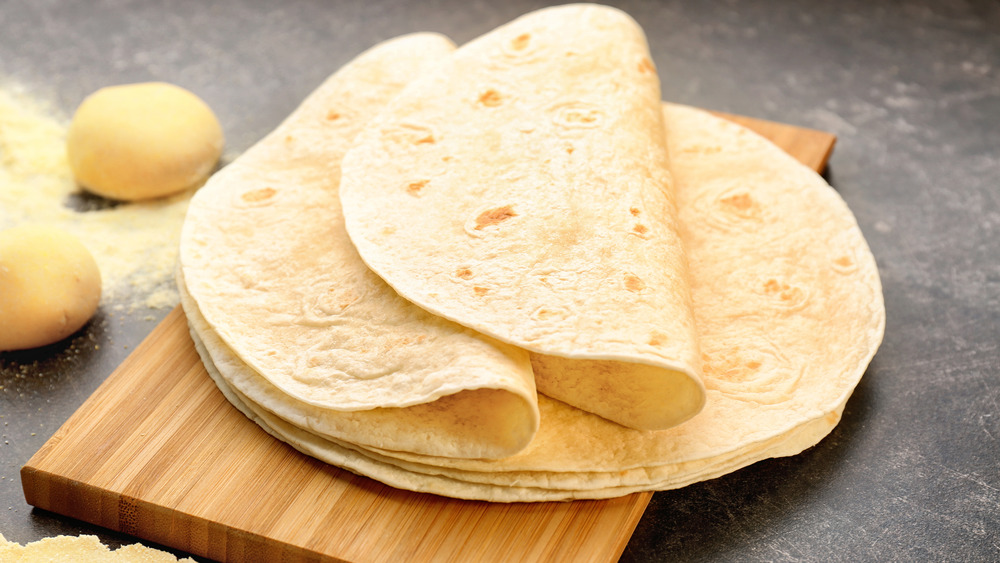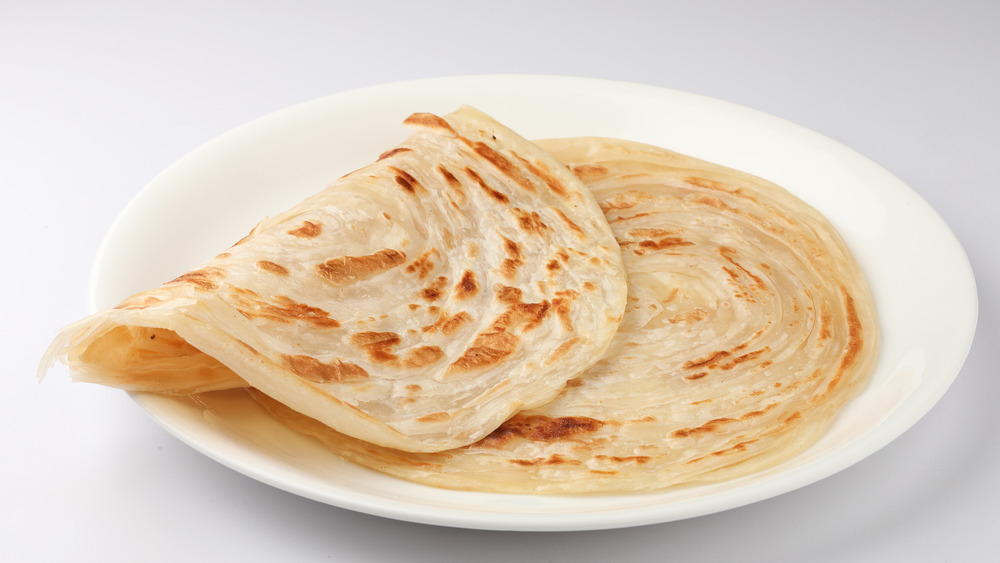The Real Difference Between Flour Tortillas And Roti
Regardless of your culture and where you might live, there is one thing that holds true for almost everyone — the love they have for bread. According to an NPR report, trace evidence of bread was found in a prehistoric fire pit that dates back over 14,000 years to the Epipaleolithic era (the gap of time between the Paleolithic and Neolithic eras). Thankfully, as the world has gotten "smaller," folks have been able to enjoy everything from sourdough to baguettes to flatbread. Like most breads, flatbreads are super versatile and can be topped and filled with just about anything your heart desires.
When it comes to flatbreads specifically, folks have their choice of things like naan, focaccia, pita, matzo, tortillas, and roti. While there are stark differences between naan, focaccia, and pita, flatbreads like tortillas and roti seem to be more similar than they are dissimilar. While the two have some overlap, both of these delicious flatbreads have a key difference, per EC Cosmo Home.
Despite their similarities, tortillas and roti require slightly different ingredients
EC Cosmo Home notes that while both flatbreads are known of their smoothness, the major difference between tortilla and roti comes down to their ingredients (something that also affects the end result post-cooking). EHow details that in order to make flour tortillas, you would need things like flour, salt, lard (or shortening), and warm water. While roti requires similar ingredients like flour, salt, and warm water, it can sometimes be made without oil. EC Cosmo Home explains that once both have been kneaded, the cooking process is quite similar — you basically roll the bread into a flat circle and cook on each side.
Because of their slightly different ingredient list, Foodies Wiki explains that the foods' nutritional value differs as well. Because of the lard that is used to make them, tortillas will have a higher fat count at around 4.5 grams, while roti tops off at about 2 grams. Tortillas also carry a higher carbohydrate count at around 26 grams, whereas roti levels off at about 18 grams.

